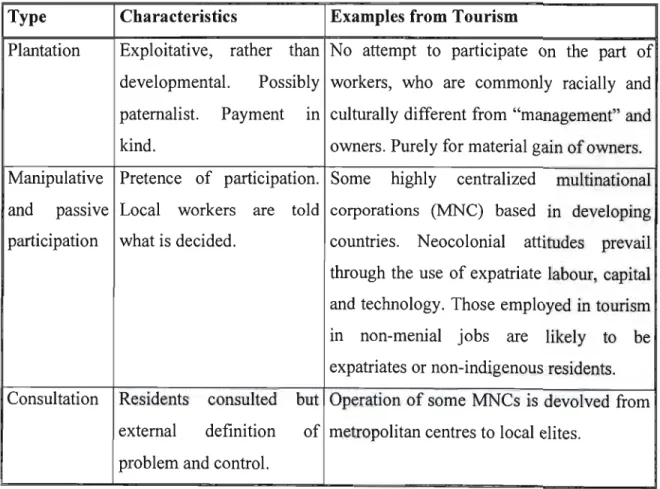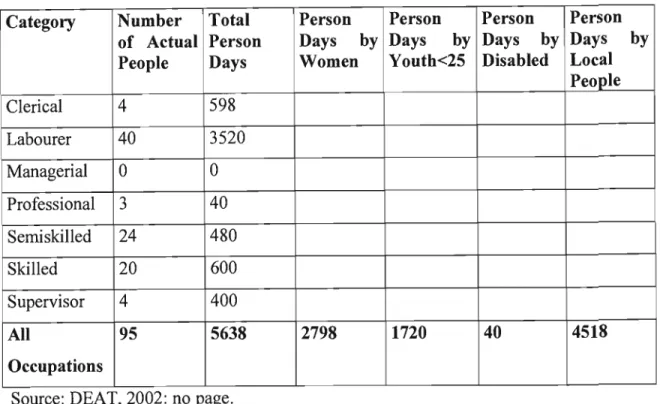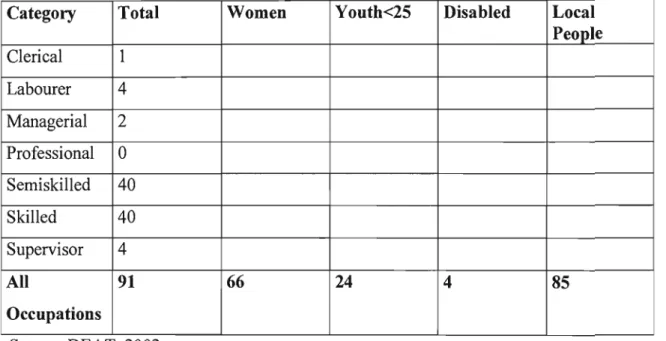However, it has raised some questions about the adequacy of the initiative to achieve poverty alleviation in the area. The third chapter provides a more detailed analysis of the concept of community participation and the inclusion of this concept in the field of tourism, as well as the main limitations of community participation in tourism within the tourism development process. This will improve the understanding of the different role players and their functions in the case study.
For example, the development of the railways in the nineteenth century helped to make coastal resorts popular. In the second half of the nineteenth century, the construction of large and luxurious vessels increased long-distance travel (Harrison, 2001). In the twentieth century, the biggest contribution to the increase in the number of tourists and destinations was definitely made by the airplane.
The level of control over the tourism sector is directly related to the size of the company. It provides a brief overview of the development and the actual situation of the tourism sector in the developing countries. In the year 2002, tourist arrivals to developing countries accounted for only 25% of the world total, with Africa representing only 4.1% (WTO, 2005).
The current characteristics of the tourism sector in the EC, as well as the main guidelines for tourism intervention, are described in the Eastern Cape Tourism Master Plan (ECTMP).
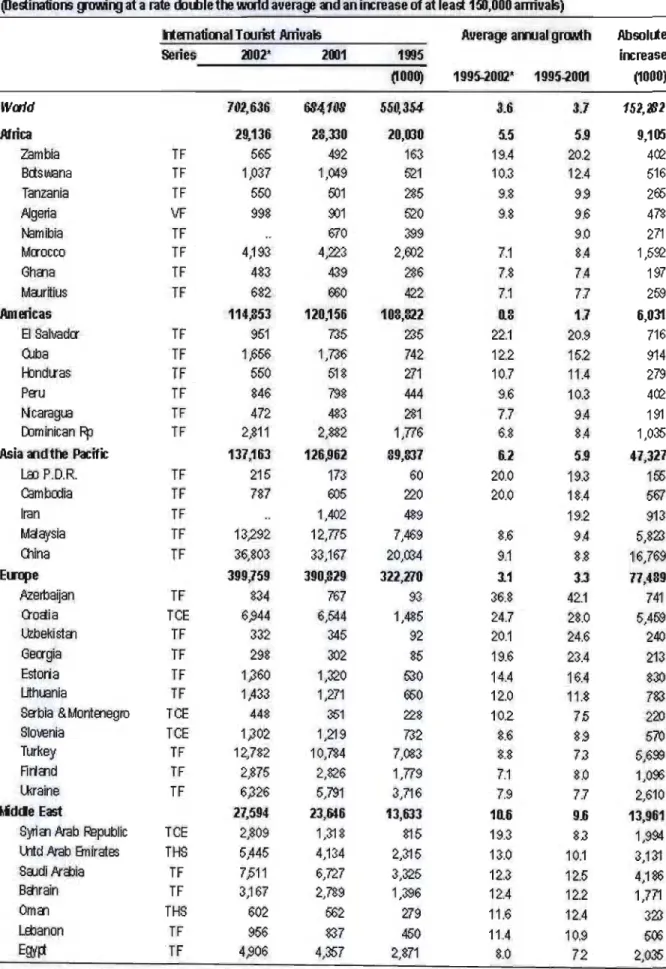
Alfred Nzo District
There are several opportunities in forestry, small furniture, wool processing and improving current livestock. The project was born in the late 1990s as a result of the LDOIIDP (Local Development Objectives/Integrated Development Planning) process, under the Development Facilitation Act of 1995. A possible increase in housing capacity was being discussed and . dependent on new funding.
CTOs play a very important role in the delivery of the anchor project; they represent the community's voice in the trust. The Swiss Agency for Development Cooperation has provided funding for the project's emergence and facilitation since 1998. From December 2002, as one of the main objectives of the operational phase described earlier, a trust was established to own and manage the project.
However, in terms of the trail's sustainability, it was estimated in project planning that a monthly average of 25 trail users was needed to break even. Section C addressed one of the missing areas in the available documentation, namely the project planning phase. Section E was aimed at obtaining information on the perception of the real impacts achieved by the project so far.
And finally, part F asked, in chronological order, about the perception of the future of the project. There is unanimity in the positive community responses as it was an anti-poverty initiative, and the majority were receptive and supportive of the project. According to the interviews, operational management appears to be a very positive aspect of the project (see Figure 4 below).
The main reasons argued for the good functioning of the management were the acceptability of the employees. Other problems raised by the respondent, but less often, are related to different phases of the project. This reinforces the idea highlighted in the previous questions, that this is one of the main problems facing the project at the moment.
The objective of this section was to obtain feedback from various stakeholders regarding the impacts of the project on the social and economic levels. When asked about the suitability of the project for poverty alleviation in the final question of this section, most agreed that tourism was the best initiative for poverty alleviation. The reason for this, as argued in the previous section, is likely to be related to the separation of the implementing agency.
The project also appears to have sought to address these early phase weaknesses in the operational phase, for example by increasing participation.
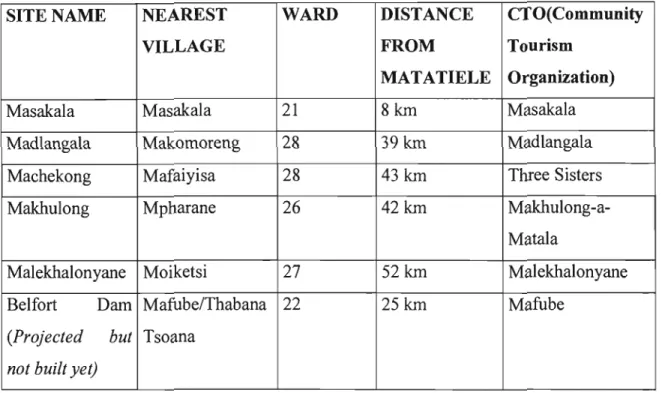
Location of chalets
Theoretical Framework
Tourism: an historical overview
Tourism, understood as the practice of traveling for recreational purposes, is not a new phenomenon; there are signs of it from centuries ago in ancient Egyptian, Greek and Roman cultures. Historically, religious reasons have always been a major motivation for travel, from the medieval pilgrimages such as the "Camino de Santiago" across Europe, which led to the development of a network of inns and hospitals to serve the needs of pilgrims; to the current 'pilgrimages' to holy or religious places such as Mecca, Jerusalem, Vatican City, etc. After the pilgrimages in the Middle Ages, the 'Grand Tour' became popular among the North American and European middle classes, but what has the tourism in the modern era, and in particular mass tourism, has been the invention and improvement of various forms of transportation.
At the same time, Fordist production of automobiles, making them more affordable, and improvements and expansion of roads increased tourism throughout Europe and North America. All these improvements in tourism and its expansion to a larger part of the population with different interests and purchasing power led to differentiation in the sector and the creation of different types of tourism.
Tourism types
34;Ecotourism is travel to sensitive, pristine and usually protected areas that strive for low impact and usually small scale. In this regard, and around the world, ecotourism is currently the subject of much discussion and debate about its impact on rural communities. Many believe that the development of eco-tourism has not lived up to its original promise and has deviated from its original definition into an elitist type of nature-based tourism for the wealthy.
It is necessary to guard against romantic notions that ecotourism is a magic panacea for poverty. According to the Eastern Cape Tourism Master Plan (ECTMP, 2003), using ecotourism as an effective tool in community development requires a massive effort to redistribute the benefits and income generated by the tourism industry. Using Weaver's (ibidem) definition for NNT, it would be any type of tourism that relies primarily on attractions directly related to cultural resources.
As CBT is the main type of tourism analyzed in this study, it is considered useful to provide a supplementary definition taken from the Eastern Cape Tourism Master Plan (ECTMP) (2003: no page): . "Community-based tourism is defined as tourism that involves rural or urban communities in the identification, development, management and promotion of their historical, cultural, heritage or natural resources as tourism products." Classifying tourism is not an easy task as throughout the literature we find numerous terms that sometimes overlap, such as alternative tourism, ecotourism, green tourism, etc., as can be seen from the definitions above.
Tourism entities and their roles
In addition, special and valuable contributions have been made by VSA volunteers for capacity building in the various areas mentioned above. The capacity building responses included in the planning section of the questionnaire will be analyzed in the next section on social impacts. There is an ongoing and successful process of capacity building, an issue that is highlighted and reinforced in much of the literature on tourism and development.
Tourism and Development
- Neoliberal development and tourism
- Alternative development and tourism
- Tourism in developing countries
- Tourism interventions in developing countries
- Impacts of tourism in developing countries
Community Participation and Tourism
- Community participation in Tourism
- Limitations to community participation in tourism
- Evaluation of tourism impacts over the host communities
General Study Methodology
Tourism in South Africa
- Provincial
- Municipal
Mehloding Community Tourism Project
- Genesis of the project
- Project description
- Objectives
- Partners, Funding and Governance structure
- Capacity building and training
- The construction phase
- The operational phase: Marketing and Performance
Fieldwork Report
- Interviews
- Results
Analysis
Summary and Conclusions
- Conclusions
- Recommendations
